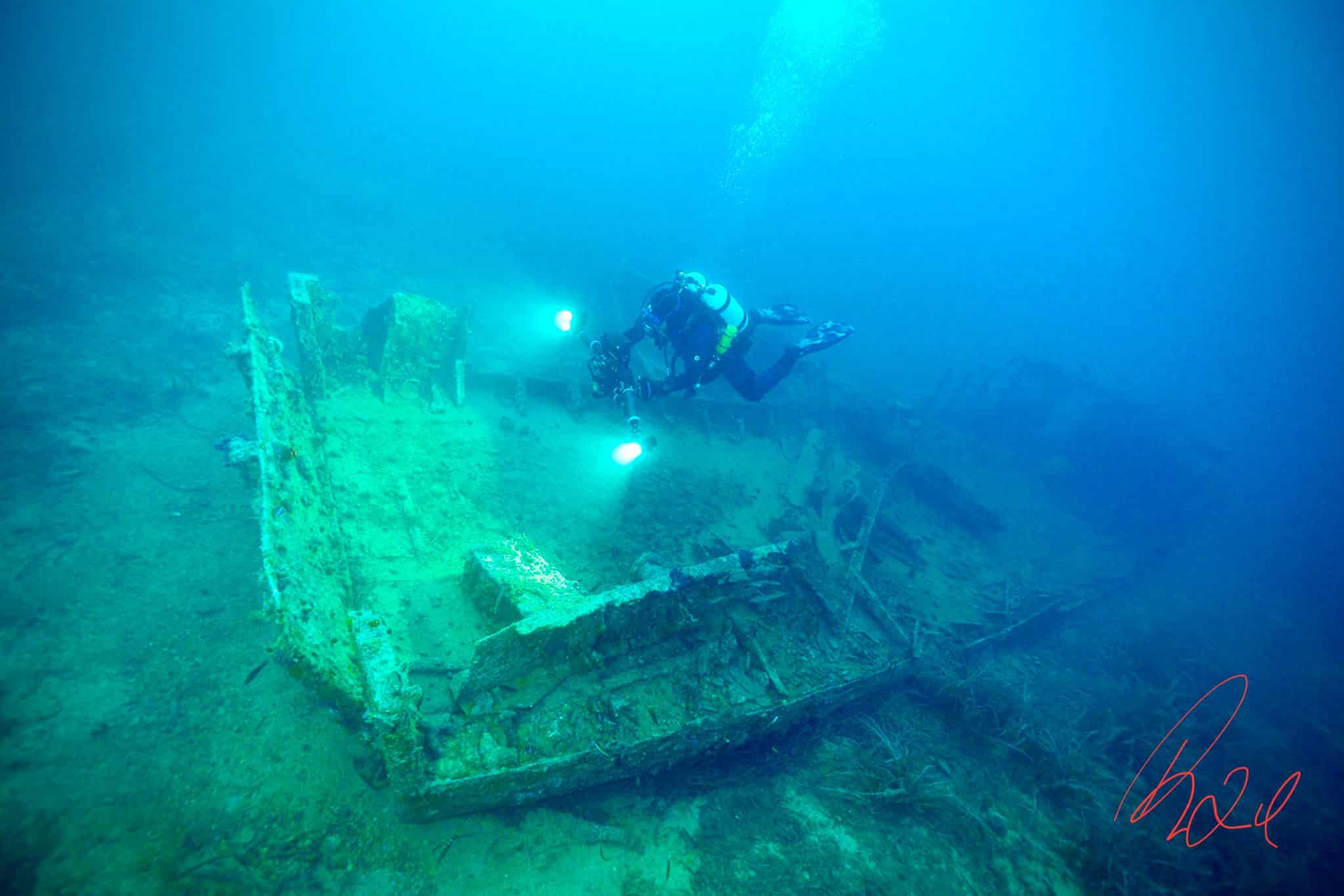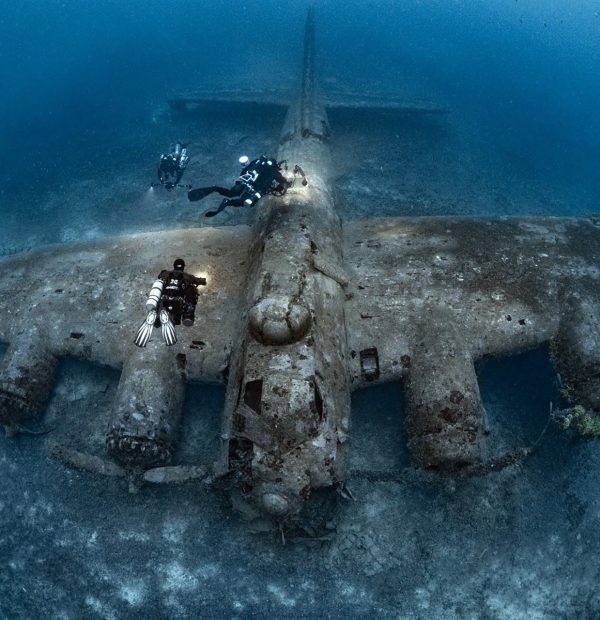Monday, 22 April 2024
Menu

While the year winds down and countries like Malta are clearing their dive sites of marking buoys in anticipation of brutal winter sea storms, Turkey is taking a different approach. In an innovative step forward, Turkey has just initiated a groundbreaking program to install 12 new buoys, demonstrating its commitment to marine history even as the year draws to a close.

As preservation and conservation become increasingly critical to the world’s underwater heritage, Turkey is taking strides in marine safety and navigation. A groundbreaking project, sponsored by the Directorate of Gallipoli War Site National & Underwater Park, aims to safeguard some of the country’s most treasured nautical relics.
The project Turkish wrecks will see the installation of navigation and mooring buoys at 11 different Turkish wrecks sites, including the wrecks of the Majestic, Helles Barge, Franco, Triumph, Milo, Ari Burnu Lighter Boat, Ari Burnu Barge, Baby Reef, Kucukkemikli Reef, and two additional unnamed barges. The Majestic site will receive special attention with two buoys installed for enhanced protection.

These buoys will be equipped with current meters and temperature readers, collecting valuable data that will inform the next phase of the project – the underwater cathodic protection of these wrecks against corrosion. Cathodic protection is a proven technique used worldwide to arrest corrosion damage, making the metal the cathode in a galvanic cell.
“We are looking at an extensive study period of two years. We need to monitor the changes in seawater over time and study wrecks at varying depths for cathodic protection. Our objective is not just to preserve these wrecks but also to understand the marine life around them. We hope to identify migratory species as part of this comprehensive research. This project is not just about conservation, it’s about gaining a deeper understanding of our marine ecosystem.” states Yusuf Kartal
This initiative will also contribute significantly to the understanding and appreciation these historical wreckages. All wrecks will be photo and video graphed over 12 months, and a true scale 1:100 scanned diorama of the Majestic will be prepared for museum display.

Such projects are vital in preserving our shared underwater cultural heritage. Their preservation ensures the protection of history and biodiversity, making this project a significant step towards sustainable marine conservation.
Turkey’s underwater world is a vibrant ecosystem teeming with life, as revealed by the wealth of marine species that inhabit its historic wrecks. These sunken relics create artificial reefs, providing habitats for creatures, including nudibranchs, crustaceans, bream, wrasse, and other fish species. The shipwrecks in Turkey’s waters, ranging from naval vessels to planes, are not only an alluring dive site for history and archaeology enthusiasts but also a haven for marine life. The wrecks have become integral parts of the local marine ecosystems, attracting a fascinating array of aquatic life and contributing to the biodiversity of the Mediterranean Sea. Divers exploring these underwater realms can expect to encounter captivating scenes of marine life on the historical remnants.
Marking buoys play a important role at dive sites, particularly those located far from the shore where divers depend on boats to reach their diving destination. These buoys serve multiple essential functions.
Firstly, they act as navigational aids for other vessels (informing to keep a distance of 300 meters), ensuring safe and efficient marine traffic. More importantly, they provide a secure mooring point. This is crucial in safeguarding the underwater wreck sites from accidental anchor drops or direct mooring, actions that could inflict severe damage to these historical remnants.
Secondly, the line extending from the buoy to the concrete block provides a reliable guide for divers navigating their way to the wreck and back to the surface. This is especially beneficial in conditions of low visibility or strong currents.
Moreover, for decompression diving – a type of diving that requires staged ascent to prevent decompression sickness – the buoy’s mooring line serves a safe way to ascend. Divers can hold onto the line during their decompression stops, providing a stable point in case of strong currents. It also offers a convenient place for divers to stow their stage tanks.
In essence, marking buoys are not just mere floating objects; they are tools that enhance safety and navigation for divers, while also serving to protect invaluable underwater heritage.
Gallipoli war site, known for its historical significance, has been transformed into a national and underwater park, offering an immersive experience into a crucial chapter of World War I. Divers can now explore the wrecks of 14 warships, including notable ones like the HMS Majestic and HMS Triumph.
The Gallipoli Historical Underwater Park, opened on October 2nd, allows visitors to journey into the past, exploring the remnants of the fierce World War I naval battles that took place in this region. Not only does it host hundreds of species, but this unique location is also home to trenches, castles, and towers related to the battle, along with graves of more than 250,000 Turkish soldiers. The Gallipoli Peninsula Historical Site spans over 33,000 hectares in Gallipoli, Turkey, and was established in 1973 by the Turkish government. With this underwater park, Turkey aims to preserve and showcase the underwater heritage of the Gallipoli battle site, turning a watery grave into a living museum of Turkish wrecks.










Welcome to DIVERS24.COM, your daily source of scuba news, freediving, scuba diving information, and equipment reviews. Our comprehensive coverage of the dive industry from A to Z provides you with all the latest scuba news, training updates, underwater photography tips, and everything else related to scuba diving. Whether you’re a beginner or an experienced diver looking for more knowledge about scuba gear or techniques – we’ve got it covered! With our in-depth articles written by experienced divers who have been there and done that, you are sure to find exactly what you need here at Divers24.com. Dive into scuba news today!
Underwater Media Sp. z o.o.
Szafarnia 11/F8,
80-755 Gdansk, Poland
Welcome to DIVERS24.COM, your daily source of scuba news, freediving, and scuba diving information. Sign in for a weekly news update and discount coupons for dive gear and apparel.
@2023 - underwatermedia.pl. All Right Reserved. Designed and Developed by Tworzenie stron internetowych Gdansk

The Divers24 portal is currently the largest online medium treating diving in Poland. Since 2010 we have been providing interesting and important information from Poland and around the world on all forms of diving and related activities.
Contact us: info@divers24.com